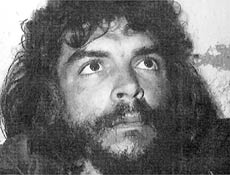Governo dos EUA critica política de combate ao terror do Brasil
O Departamento de Estado americano fez críticas à política de combate ao terrorismo adotada pelo governo brasileiro em um relatório anual sobre o terror no mundo divulgado nesta sexta-feira. Segundo o documento, o Brasil “não ofereceu o apoio político e material necessário para fortalecer as instituições antiterroristas”.
O relatório afirma que o Brasil “preferiu não estabelecer um regime de designação de organizações terroristas” similar à “lista negra” criada por Washington.
O documento –referente às atividades de combate ao terror no ano de 2005– dá destaque ao problema do controle da Tríplice Fronteira (entre Brasil, Argentina e Paraguai), que foi apontada como cenário de “arrecadação de fundos” por parte do Hizbollah (grupo extremista islâmico libanês que recebe apoio sírio e iraniano) e do Hamas (grupo extremista islâmico).
A fonte de recursos para estas organizações consideradas terroristas pelo governo dos EUA seria, segundo o Departamento de Estado, a numerosa população muçulmana que vive na área da fronteira dos três países sul-americanos.
O Hizbollah é considerado um grupo terrorista pelos Estados Unidos. No Líbano, o movimento não é visto como uma entidade terrorista, mas como um grupo de resistência contra a invasão israelense ao país. O grupo também é um dos principais partidos libaneses, que realiza ações humanitárias e possui uma rede de escolas e hospitais.
Apesar das falhas apontadas pelos EUA, o relatório ressalta que “o governo do Brasil condenou vigorosamente o terrorismo” e que, em geral, “continua melhorando sua capacidade antiterrorista”.
Em dezembro de 2005, foi realizada em Brasília a 4ª Reunião Plenária do Grupo 3+1 sobre a Segurança da Tríplice Fronteira, reunindo autoridades de Brasil, Argentina, Paraguai e Estados Unidos. Na ocasião, foi divulgado um comunicado conjunto que não confirmava o suposto envio de recursos para grupos terroristas.
“De acordo com a informação disponível até o presente momento, não foram detectadas atividades operativas de terrorismo na área da Tríplice Fronteira. No caso de serem detectadas quaisquer atividades que poderiam contribuir, mesmo indiretamente para ações terroristas, inclusive no que se refere ao seu financiamento, as delegações se comprometeram a intercambiar prontamente informações, de forma a coibir eventuais ilícitos”, informava o documento da reunião plenária.
O Departamento de Estados explicou hoje que “uma comissão governamental propôs uma nova estrutura nacional inter-agências contra o terrorismo, mas o governo [brasileiro] não apresentou a legislação para implementá-la”.
O Itamaraty informou, por meio de sua assessoria de imprensa, que o governo brasileiro já tomou conhecimento do relatório, mas não quis comentar o documento alegando que sua análise ainda seria feita.
Fonte: Folha Online – 28/04/2006
Leia Mais:
Custo de guerras pode chegar a US$ 811 bi para os EUA
Número 2 da Al Qaeda diz que insurgentes abalaram EUA no Iraque
Milhares de pessoas protestam em NY contra guerra no Iraque
